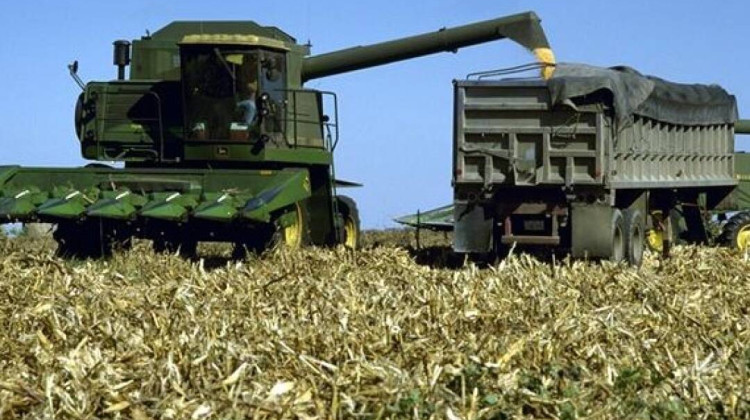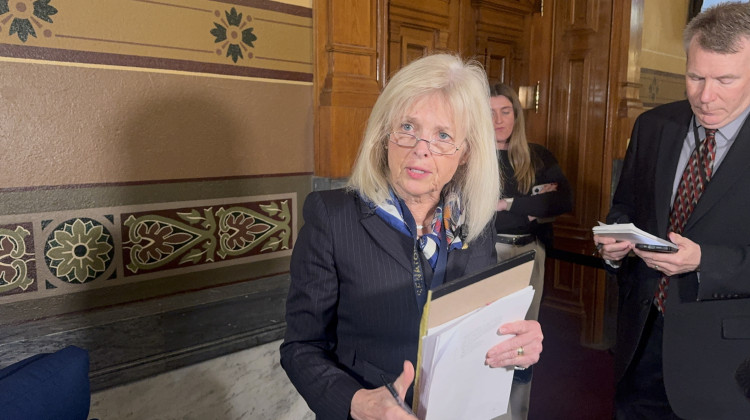
Bell's honeysuckle is one of 44 plants on the list.
Leslie J. Mehrhoff/University of Connecticut/Bugwood.orgThe Indiana Natural Resources Commission adopted a preliminary measure on Tuesday that would make the sale, transport, introduction, or distribution of more than 40 invasive plants illegal.
Public and private land managers in the state spend more than $8 million a year controlling invasive plants like Bell’s honeysuckle and garlic mustard.
Henry County resident Helen Steussy says she fights them, only to have them creep back into her property from a neighbor’s yard. She says because they’re legally sold, people don’t think these invasives are harmful.
“They trust the nurseries, they trust the landscapers, and they trust the laws of Indiana,” says Steussy.
Invasive plants also threaten the state's forests and timber industry — which makes up $7 billion of Indiana's gross domestic product. They also affect wildlife.
"Our honeybees, all the different things that pollinate our plants that directly affects our food. You get these wild things in there that take over and crowd everything out — then you have a problem with the whole food chain," says Lynn Burry, policy committee chairperson of the Indiana Wildlife Federation.
READ MORE: Invasive Species Management Groups To Nearly Double In Indiana
Ellen Jacquart is the invasive education chair with the Indiana Native Plant and Wildflower Society. She says she’s happy the rule went through, but concerned that two species were left off the list — Norway maple and Callery pear. Jacquart says she expects people will voice their frustration with the pear at upcoming meetings.
“That it’s completely irrational to continue selling an invasive plant that we’re also spending hundreds of thousands of dollars a year to control in the state,” she says.
Megan Abraham is with the Indiana Department of Natural Resources' division of entomology and plant pathology. She says the state needs to educate the public to decrease demand for the trees — so that a ban won't have as much of an economic impact on nurseries, nursery growers, and other such businesses.
Abraham says it could be anywhere from nine to 12 months before the ban is brought to the NRC for final adoption. If the final rule passes, she says businesses that sell these invasive plants will have another year after it becomes effective to rid their stock of them.
The NRC says the Norway maple and Callery pear could be added to the list later. The agency is expected to add two species to their ban on the invasive aquatic plants trade in September — starry stonewort and water soldier.
Indiana Environmental reporting is supported by the Environmental Resilience Institute, an Indiana University Grand Challenge project developing Indiana-specific projections and informed responses to problems of environmental change.
 DONATE
DONATE









 Support WFYI. We can't do it without you.
Support WFYI. We can't do it without you.